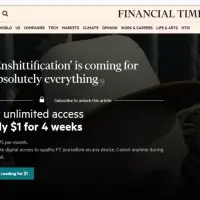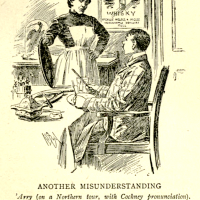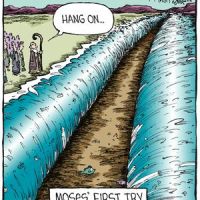 Ricke, Joe, and Ashley Chu, eds. The Faithful Imagination: Papers from the 2018 Frances White Ewbank Colloquium on C.S. Lewis & Friends. Hamden, CT: Taylor University, 2019.
Ricke, Joe, and Ashley Chu, eds. The Faithful Imagination: Papers from the 2018 Frances White Ewbank Colloquium on C.S. Lewis & Friends. Hamden, CT: Taylor University, 2019.
The title of this volume refers to the theme of the eleventh Biennial Lewis & Friends Colloquium at Taylor University, “The Faithful Imagination.” Included are thirty-one scholarly essays, eight creative pieces, and six reflections on the colloquium, an unusual format for an academic anthology, but one that makes sense given the theme of the conference. As Crystal Hurd points out in her foreword, author and scholar C.S. Lewis blended the spiritual, academic, and imaginative, and the contents in this anthology tackle all three aspects. The Faithful Imagination blends thorough academic analysis of a broad variety of topics with an in-depth study of Lewis-related creativity, imagination, and faith. Although clearly aimed at conference attendees, the essays are no less valuable to scholars of Lewis and connected authors or anyone interested in the Inklings and related literature.
Some of the papers will be more accessible than others to non-Christian academics, but there is still a rich variety of work on authors including, along with C.S. Lewis, George MacDonald, Dorothy L. Sayers, L.M. Montgomery, H.P. Lovecraft, J.R.R. Tolkien, and Samuel Taylor Coleridge that will appeal to a wide audience of literary scholars. There is also variety in the formality of papers, which is perhaps to be expected from a conference anthology and does not necessarily detract from the academic rigour of the volume.
 The first section, “Essays on C.S. Lewis,” features Hurd’s paper on Lewis’s background and the ways in which his family “shaped him as a scholar and author” (10). In another notable essay, “Lewis Underground: Echoes of the Battle of Arras in The Narniad,” Victoria Holtz Wodzak discuss the personal and historical foundations provided by Lewis’s experiences of trench warfare in the Great War, and in another, “The Five Deaths of C.S. Lewis,” Jennifer Woodruff Tait points out that Lewis’s life and work were “particularly shaped by wrestling with the problem of death.” Jim Stockton discusses the trees in Lewis’s Narnia, providing examples of the characterization and interaction of trees “helps develop a sense of virtue and/or religiosity” (71), arguing that the trees of the magical world offer hope to both characters and readers.
The first section, “Essays on C.S. Lewis,” features Hurd’s paper on Lewis’s background and the ways in which his family “shaped him as a scholar and author” (10). In another notable essay, “Lewis Underground: Echoes of the Battle of Arras in The Narniad,” Victoria Holtz Wodzak discuss the personal and historical foundations provided by Lewis’s experiences of trench warfare in the Great War, and in another, “The Five Deaths of C.S. Lewis,” Jennifer Woodruff Tait points out that Lewis’s life and work were “particularly shaped by wrestling with the problem of death.” Jim Stockton discusses the trees in Lewis’s Narnia, providing examples of the characterization and interaction of trees “helps develop a sense of virtue and/or religiosity” (71), arguing that the trees of the magical world offer hope to both characters and readers.
In the next section, “Lewis and…,” scholars discuss Lewis’s work alongside that of other authors. Scholars of Lewis will be aware of the influence of George MacDonald on his writing, and Marsha Daigle-Williamson provides an interesting account of Lewis’s assessment of MacDonald’s work, claiming that the influence was more spiritual than literary. There are unexpected perspectives on Lewis’s work here, too, including Brenton Dickieson’s comparison of Lewis’s Sehnsucht, or longing, to L.M. Montgomery’s “Flash” in her Emily series. John Stanifer compares and contrasts Lewis’s dead city of Charn in The Magician’s Nephew with horror author H.P. Lovecraft’s city R’lyeh from his short story “The Call of Cthulhu,” as well as the authors’ differing worldviews.
 In the third section, “Essays on Inklings and Others,” a wide range of authors is considered. Grace Tiffany presents contrasting perspectives on trees as characters in “Shakespeare’s and Tolkien’s People-Trees,” Emily Austin compares aspects of J.K. Rowling’s wildly popular Harry Potter series to Tolkien’s The Lord of the Rings, and Barbara L. Prescott discusses Dorothy L. Sayers’ second volume of poetry as “her first major statement as a Christian apologist” (246). Other scholars examine the work of those closest to Lewis, including Marie K. Hammond, who discusses the criticism of the Catholic church in Joy Davidman’s novel Weeping Bay, and Paul E. Michelson, who writes about the historical and editorial work of Lewis’s brother, Warren Hamilton Lewis.
In the third section, “Essays on Inklings and Others,” a wide range of authors is considered. Grace Tiffany presents contrasting perspectives on trees as characters in “Shakespeare’s and Tolkien’s People-Trees,” Emily Austin compares aspects of J.K. Rowling’s wildly popular Harry Potter series to Tolkien’s The Lord of the Rings, and Barbara L. Prescott discusses Dorothy L. Sayers’ second volume of poetry as “her first major statement as a Christian apologist” (246). Other scholars examine the work of those closest to Lewis, including Marie K. Hammond, who discusses the criticism of the Catholic church in Joy Davidman’s novel Weeping Bay, and Paul E. Michelson, who writes about the historical and editorial work of Lewis’s brother, Warren Hamilton Lewis.
The section entitled “Essays on the Faithful Imagination” is where the content begins to veer away from the academic and toward discussions of Christian creativity and imagination; it is no less rigorous but might be of less interest to any reader who is not engaged with Christian literature. Laura Smit, for example, discusses “Mary, Martha, and the Faithful Imagination” in the New Testament with the help of an essay by Sayers, and Richard G. Smith explores the book of Job in the Old Testament as a work about the faithful imagination. Abby Palmisano explores redemptive storytelling in Samuel Taylor Coleridge’s “Rime of the Ancient Mariner” and George MacDonald’s novel Adela Cathcart, and Jim S. Spiegel discusses the central Christian moral guideline, the Golden Rule, in Lewis’s An Experiment in Criticism.
 Ricke, Professor of English at Taylor University and Director of the Center for the Study of C. S. Lewis and Friends, and Chu, University Archivist and Special Collections Librarian at Taylor, have managed to compile an anthology that is at once a thorough and rigorous study of the work of the Inklings and related authors and a keepsake-worthy record of creativity, imagination, and the Christian faith that will encourage future scholars to attend this unique biennial conference.
Ricke, Professor of English at Taylor University and Director of the Center for the Study of C. S. Lewis and Friends, and Chu, University Archivist and Special Collections Librarian at Taylor, have managed to compile an anthology that is at once a thorough and rigorous study of the work of the Inklings and related authors and a keepsake-worthy record of creativity, imagination, and the Christian faith that will encourage future scholars to attend this unique biennial conference.
 Reviewed by Allison McBain Hudson, Dublin City University. Allison is a first-year PhD candidate at Dublin City University in Ireland, researching objects and material culture in children’s literature, specifically the novels of L.M. Montgomery. Her other interests include the works of the Inklings, Canadian studies, and anything to do with trees, books, chocolate, coffee, and conversation.
Reviewed by Allison McBain Hudson, Dublin City University. Allison is a first-year PhD candidate at Dublin City University in Ireland, researching objects and material culture in children’s literature, specifically the novels of L.M. Montgomery. Her other interests include the works of the Inklings, Canadian studies, and anything to do with trees, books, chocolate, coffee, and conversation.






















Thanks for this! Good to have this ‘out there’ – I hope a broad range of good libraries will have it on their shelves for those who couldn’t be there and would like to catch up, and to surprise and attract the unfamiliar with such varied-sounding food for thought.
Thanks David
Pingback: L.M. Montgomery Articles on A Pilgrim In Narnia #lmmi2020 #LMMontgomery | A Pilgrim in Narnia
Pingback: A Flash of Joy: Discussing C.S. Lewis and L.M. Montgomery Online with The C. S. Lewis Society of Central Indiana (Fri, Feb 19th, 2021, 7-9pm EST) | A Pilgrim in Narnia
Pingback: 5 Ways to Find Open Source Academic Research on C.S. Lewis, J.R.R. Tolkien, and the Inklings | A Pilgrim in Narnia
Pingback: The C.S. Lewis Studies Series: Where It’s Going and How You Can Contribute | A Pilgrim in Narnia
Pingback: “Can C.S. Lewis and L.M. Montgomery be Kindred Spirits?” My Talk for the 2021 C.S. Lewis & Kindred Spirits Society Conference (Nov 18-20) and How You Can Go to Romania With Me | A Pilgrim in Narnia